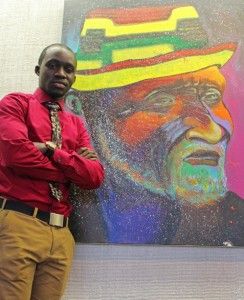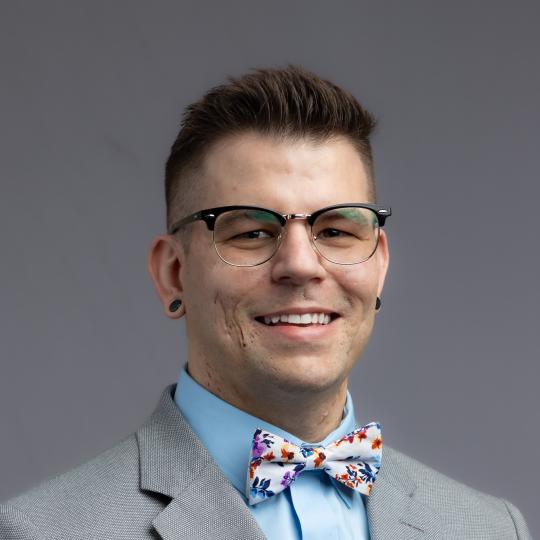Traveling to the homeland through art

April 7, 2014
Passing through the Art Alley on the second floor of the Student Center, it is hard not to notice the colorful paintings of vibrant reds and yellows.
The collective series is called “Homeland” and includes portraits of people who embody the beauty of Africa. The man behind these works is Solomon Adufah, a senior from Chicago studying architecture.
Adufah’s love for art started as a four year old. He grew up in Odumasi, a small village in Ghana with a population of roughly1,000.
Advertisement
Adufah said he would keep a diary to draw characters from the Disney channel or SeaWorld commercials
“Since I didn’t watch television too much because it wasn’t available to everyone where I grew up, I would keep this diary to create images,” he said.
He and his brother moved to the United States to join their mother who was earning her doctoral degree. They lived in Virginia before moving to Olympia Fields in 2007.
After graduating from Rich Central High School he attended Harold Washington College and Prairie State College before deciding to join the architectural program at SIU.
“I came to SIU, not necessarily to study art. I came here to study architecture,” he said. “SIU has a great undergraduate and graduate program, but not until last winter, I was compelled to do something with the talent that I have, which is to create this series “Homeland.”
He began painting five years ago and uses vibrant colors to represent Africa through his art.
“The red represents the blood that was shed from slavery and civil war,” he said. “The green represents the wealth of the land and the gold or yellow represents the wealth of Africa.”
Advertisement*
Adufah has presented many pieces in exhibitions including the C4 Art Exhibition Archives and a presentation to Angela Davis. Adufah said giving Angela Davis his portrait of her is one of his greatest accomplishments. He is preparing a portrait for Cornel West for when he arrives on campus.
The self-taught Adufah said being a full-time student and having a job forces him to use his time wisely. He paints through the night, taking about three to four hours on each painting.
“I believe that the more you do it, the more you perfect your craft and the easier it becomes when you do it,” he said. “I paint all the time, so that when people hear, ‘Oh my gosh, you finished these paintings in a matter of hours.’ That’s just because I do it a lot.”
Adufah said he tries to make the painting flow naturally and prefers a more impromptu approach.
“I don’t necessarily have to think about it,” he said. “It’s all impulsive. I don’t determine what my pallet is going to be. I just pick up my paintbrush.”
There are many subjects represented in the “Homeland” series. Adufah said the people are from Nigeria, Ghana and West Africa and are all drawn from memory.
“The characters that I pick are indigenous people, beautiful people who come from all various countries of Africa,” he said. “I pick these characters because of their emotional energy that I see and I try to capture that artistically with my use of vibrant colors.”
Adufah said he wants his arts to display the typically unseen beauty of Africa. He said Africa is doomed to be a place only remembered for poverty, war and disease.
“These I painted because I believe there is beauty in the innocence of children,” he said. “There is this image here in America that all young children of Africa need to be cared for or do not have a good life. When I lived in Odumasi, I was happy and I had my family. I only hope to allow people to see that through my work.”
He said support and criticism from his brother keeps him motivated to use his art for a greater purpose. He said it was a heated debate at the dinner table over Christmas break that sparked the creation of “Homeland.”
“We were arguing. He was telling me about how I wasn’t investing in my art,” he said. “At first, I took it in a negative way, but later I realized he was only trying to motivate me and not discourage me. Ever since, I made the decision to never look back.”
His brother now helps critique pieces and helps with marketing strategies for future exhibitions.
His art will also be presented during the lecture of Cornel West at 7 p.m., April 17 at Shryock Auditorium.
Advertisement









